Making Shutter Cloth
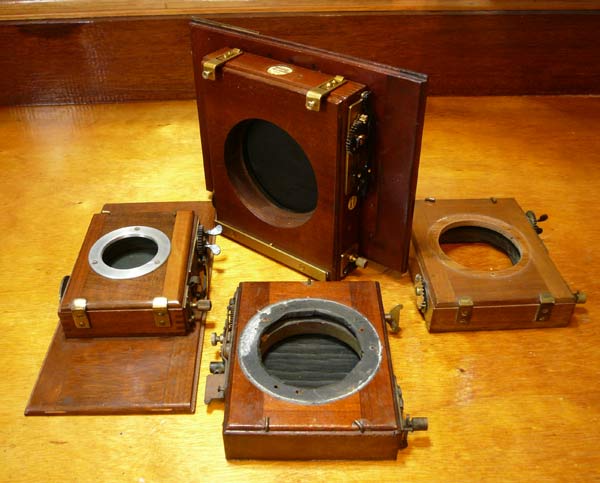
Many old large format lenses, which are still very interesting to use, have no built in shutter. They are called lenses in barrel. For a long time the most popular shutter used with them, normally in front of the lens, was the roller-blind type. The system of having a light proof cloth with a window that passes in front of the lens to expose the film for a fraction of a second was created around 1862 and remained in production until the 70's. Thornton-Pickard, an English firm, was probably the best known roller-blind shutter producer ever. They patented the T-P shutter in 1886 and almost all brands that followed picked the basic idea from that pioneering design. There are many shutters of that kind that you can easily find on ebay or antique shows and flea markets in general. The problem with them is that the cloth is normally dry, cracked, torn or simply not present. While browsing in web forums for tips on how to close pinholes in bellows, I grabbed one idea that made me thing of an alternative way to make new shutter cloth. I tried and after some attempts it finally worked out. I am now using one that I mounted in a Thorton-Pickard shutter for 2 months and it seem it will remain usable for quite a while. That is what I documented and described the basic steps in this page. I believe it can be a solution to fix many old shutter out there. Case you have any comments or questions where I could possibly help, feel free to get in touch. If you want to know more about shutters in general I recommend going to Ernest Purdum' s article in the Large Format Photography web site.
To try out yourself refurbishing an old roller-blind shutter by making and replacing a new curtain, the step by step that worked for me went like this...
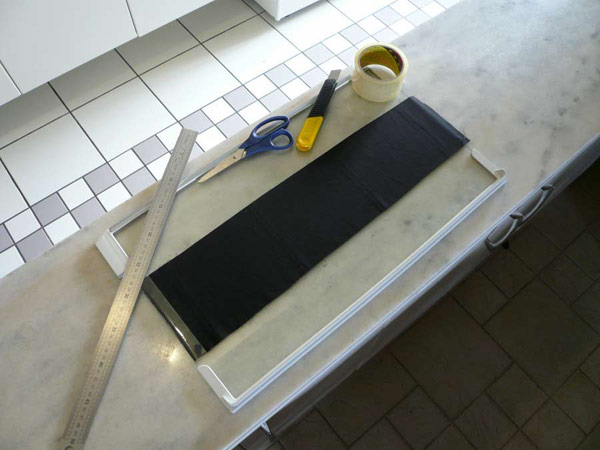
Start by cutting a piece of black fabric a bit oversized in regards to the final curtain. The fabric should obviously be thin, flexible, uniform and yet as light tight as possible. I bought sheer 100% polyester, one of the cheapest alternatives in store. Using adhesive tape, attach it extended over a glass plate. Do not allow it to be loose but don't stretch it either. The glass is useful to check later on for pinholes by back lighting it.
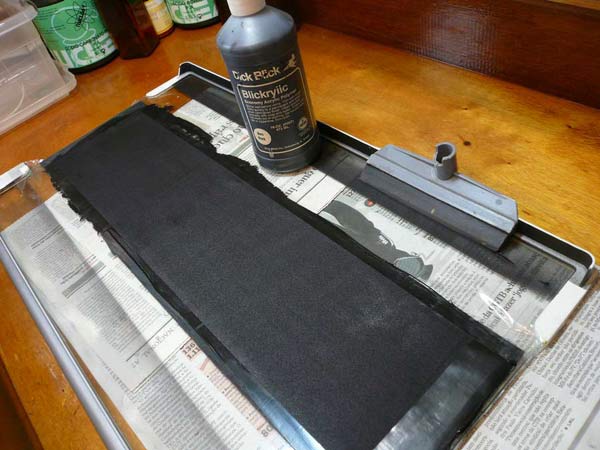
Here comes the crucial trick: using acrylic black ink it is possible to make the cloth light proof and yet flexible enough to be rolled inside the shutter. This kind of ink worked fine because it is reasonably flexible when dried and as any other ink is made to stick to surfaces. The fabric is really a sort of ideal support due to the fibers that will microscopically intermesh with the polymer. In order to apply it a rubber rod is just perfect. Start with a generous quantity of ink in one side of the patch and run it to the other side using the rod. Do it quickly and without pressure.
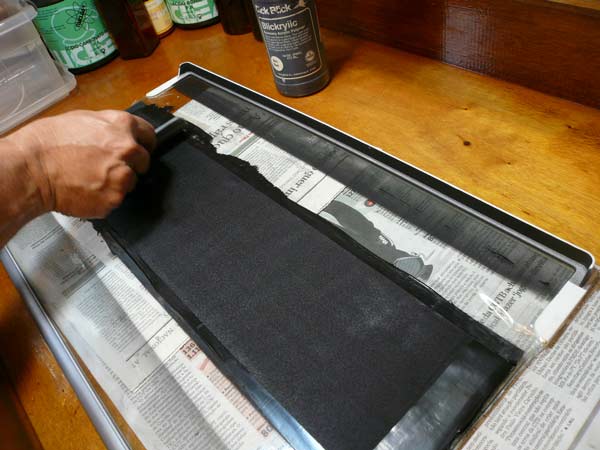
The ink should not show up on the other side of the fabric. By the way, I believe that many brands of ink will do but be aware that the ink's viscosity has to be quite high. I did not try with acrylic in tubes but this one in the picture, although in a bottle, is thick as white glue for wood. Allow it dry and check how much light is still passing by. You should see quite a number of holes. Apply a second layer and maybe a third always allowing time to dry.
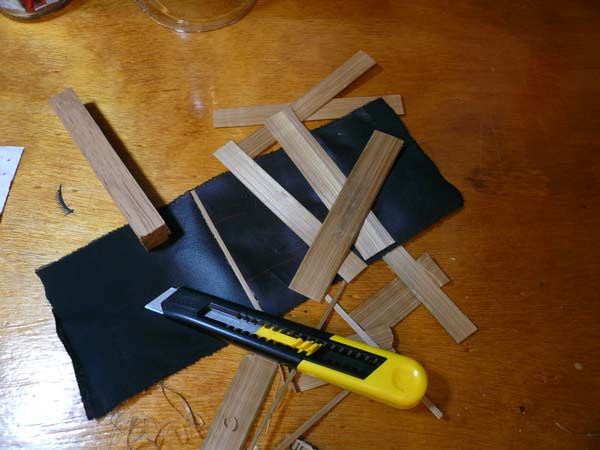
Now you have to prepare some bamboo sticks. Bamboo can be made very thin and yet hold good resistance to structure the shutter window. Two sticks having 2 to 3 mm in one dimension and the thinest you can on the other will do perfectly. The one in the picture I glued to the fabric just to test it. The real one, I decided to cut the window in the cloth, before attaching the stick.
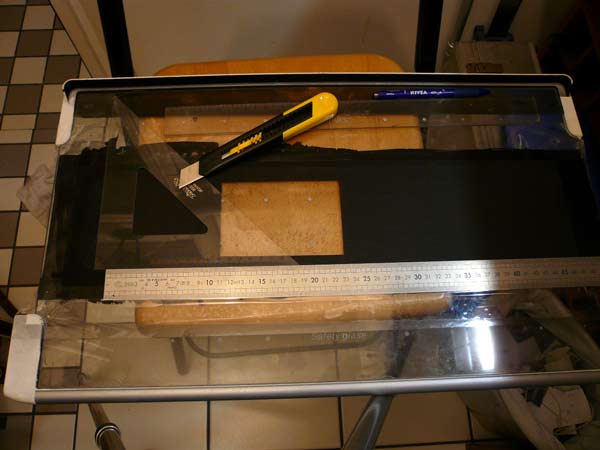
I had the chance to have the old curtain and used it to easy my life with measurements. For those without any reference I advice to let some extra length of cloth to be cut later.In cutting the window you will realize that the ink made the fabric very similar to the normal rubberized shutter cloths we find from professional sources. If you were careful no keep the ink only on one side of the cloth you will see that the chance of having the curtain sticking to itself while rolled, is quite low because one side does not "combine" with the other. Anyway, I have to wait some years to see how the materials actually behave over time.
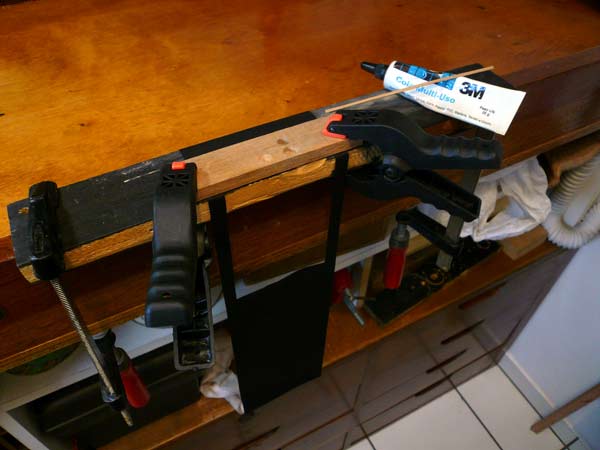
Now it is time to glue the bamboo sticks. It is advisable to find a way to hold and produce a uniform pressure. I just picked the Multi Use 3M glue and it produced a very good result.
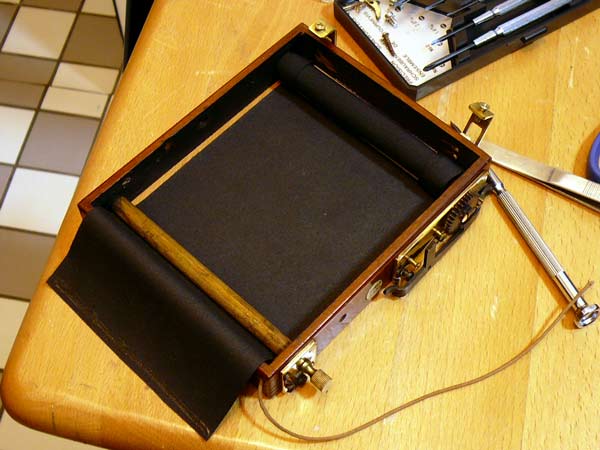
Time to mount it inside the shutter. It took me some time to figure out how. There is only one relative position that makes the shutter cock and fire properly. The way that worked for me was to assemble it in the cocked position with the spring loose and only at the end I added pressure by spinning the inner part of the axis but not rolling the curtain.
Well, I hope that was useful for you. I would never try this for a 35mm camera but for a reasonably sized shutter this is something that still fits into the home made industry standards.
